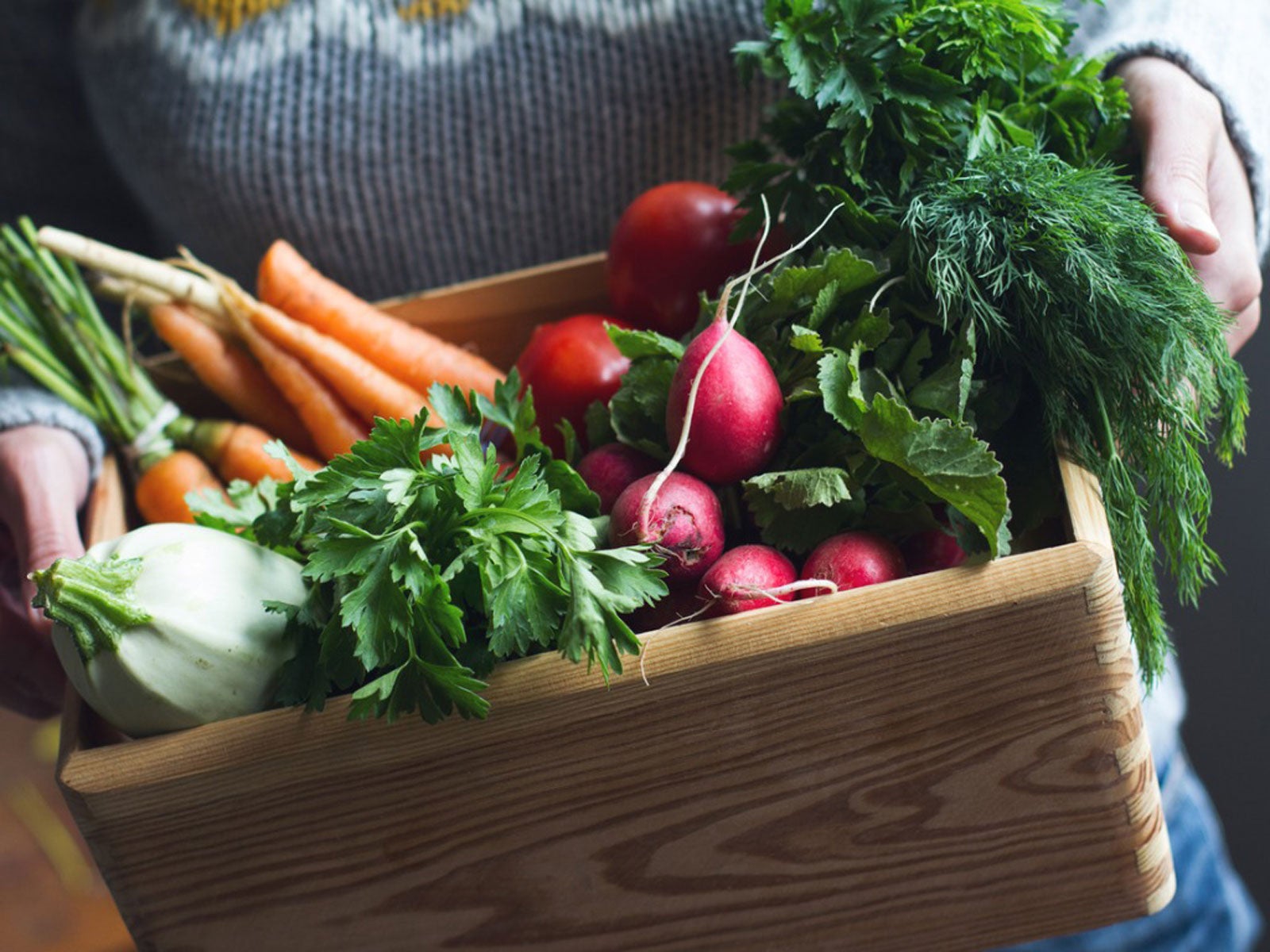Harvesting In Winter: When To Pick Winter Vegetables


If you live in a warm climate, a winter vegetable harvest may not seem like a big deal. For cold-climate gardeners, however, growing winter crops is a dream come true. With the use of cold frames and tunnels, harvesting in winter is possible even if you live in an area with below-freezing winter temperatures and snow cover.
Growing Winter Harvest Plants
The keys to harvesting in winter are choosing cool-season crops, planting at the correct time, and choosing the correct season-extenders for your climate. Some crops, like Brussels sprouts, can be planted in late summer and held over in high tunnels for an extended harvest period.
Low tunnels and cold frames can provide adequate protection in moderate climates to allow harvesting in winter or they can be used to extend the harvest season in cold climates. During cold weather, low tunnels can be covered with polyethylene film to help retain heat.
When to Pick Winter Vegetables
Protection from freezing temperatures is not the only issue gardeners wishing to grow winter crops will face. Decreased daylight hours during the winter months will slow or halt plant growth. In order to have a successful winter vegetable harvest, most crops will need to be at or near their mature dates when daylight hours drop to ten or less per day.
The days when there are ten or less hours of sunlight is called the Persephone period. Gardeners can use the Persephone period for their area to determine when to pick winter vegetables. Planting times are then calculated by counting back the days and weeks from the harvest date.
Gardening tips, videos, info and more delivered right to your inbox!
Sign up for the Gardening Know How newsletter today and receive a free copy of our e-book "How to Grow Delicious Tomatoes".
Planning for a Winter Vegetable Harvest
Here's how to calculate the planting and harvest dates for winter crops in your area:
- First determine your Persephone period. You can do this by looking up the sunrise and sunset dates for your area. The Persephone period begins when the day length drops to ten hours in the fall and ends when day length returns to ten hours per day in late winter.
- Decide when to pick winter vegetables based on the Persephone period. Ideally, your crops will be near or at their maturity date at the start of the Persephone period. The cool temperatures and low daylight hours will hold many crops in a semi-dormant state. This can extend harvest time throughout the Persephone period. (Once daylight returns to ten plus hours per day, cool season crops are prone to bolting.)
- Using the days to maturity for your desired crop, count backwards from the start of the Persephone period. (You may wish to add two weeks to account for slower growth in the fall.) This calendar date marks the last safe planting day for a successful winter vegetable harvest.
Best Winter Crops
To harvest during the winter months, try growing one or more of these cool-season vegetables in a tunnel or cold frame:

Laura Miller has been gardening all her life. Holding a degree in Biology, Nutrition, and Agriculture, Laura's area of expertise is vegetables, herbs, and all things edible. She lives in Ohio.
-
 5 Tough Urban Trees That Thrive In Cities – Top Picks For Urban & Suburban Landscapes
5 Tough Urban Trees That Thrive In Cities – Top Picks For Urban & Suburban LandscapesExplore the best urban trees that will add value to even the most challenging of landscapes. Get growing with these ideas and enjoy all the benefits of trees.
By Teo Spengler
-
 7 New & Improved Cultivars Of Old-Fashioned Plants – These Aren’t Your Grandma’s Plants!
7 New & Improved Cultivars Of Old-Fashioned Plants – These Aren’t Your Grandma’s Plants!Old is new again! These old-fashioned plants have new cultivars that are sure to thrive in your garden and bring the charm factor. Neighbors will be envious!
By Mary Ellen Ellis
-
 How Many Vegetables To Plant Per Person For A Year
How Many Vegetables To Plant Per Person For A YearGauging how much to plant in a vegetable garden can eliminate waste while still producing enough for your family. Click for more.
By Bonnie L. Grant
-
 13 Perennial Fruits And Vegetables You Only Have To Plant Once
13 Perennial Fruits And Vegetables You Only Have To Plant OnceLooking to set it and forget it? Find out which fruits and vegetables can be grown as perennials.
By Laura Miller
-
 11 Edible Plants For A Year-Round Garden In A Bucket
11 Edible Plants For A Year-Round Garden In A BucketWant to know how to grow food inside your house and which foods do best indoors? Click here to learn all about it.
By Bonnie L. Grant
-
 Frost Tolerance Of Vegetables From Least To Most Hardy
Frost Tolerance Of Vegetables From Least To Most HardyHow cold can vegetables tolerate? Knowing which veggies will survive frosts and freezes is essential for the success of your garden. Click here for more.
By Laura Miller
-
 Best Vegetables To Pickle Straight From The Garden
Best Vegetables To Pickle Straight From The GardenPickles aren’t limited to just cucumbers. Read on for tips on pickling your fresh veggies.
By Amy Grant
-
 Benefits Of Planting In Fall Vs. Spring Vegetable Plots
Benefits Of Planting In Fall Vs. Spring Vegetable PlotsLearn why some vegetables do better if you plant them in fall instead of spring.
By Laura Miller
-
 Interplanting Vegetables In The Fall Garden
Interplanting Vegetables In The Fall GardenLearn all about the benefits of interplanting vegetables for your fall garden.
By Laura Miller
-
 Best Vegetables For Growing In Perlite
Best Vegetables For Growing In PerlitePerlite is a natural growing medium that comes from super-heated volcanic glass. In some cases, it works better than soil. Read on for more info.
By Laura Miller